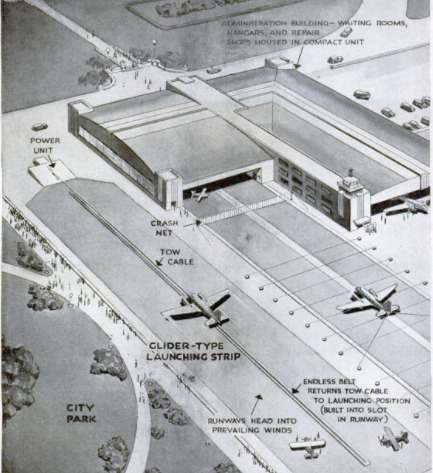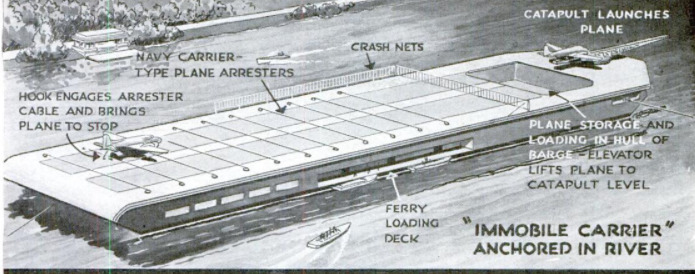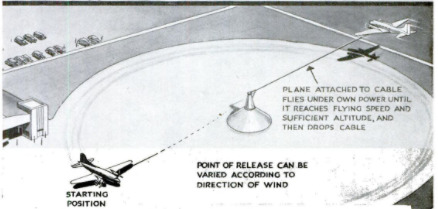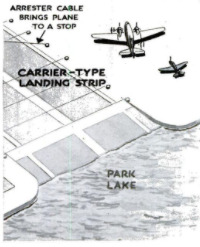Space-Saving Airports for Tomorrow's Skyways
Item
-
Title (Dublin Core)
-
Space-Saving Airports for Tomorrow's Skyways
-
Article Title and/or Image Caption (Dublin Core)
-
Space-Saving Airports for Tomorrow's Skyways
-
extracted text (Extract Text)
-
POSTWAR commercial airports will
be models of compactness, efficiency,
and safety, according to Andrew J.
Fairbanks, professor of aeronautical
engineering at Rensselaer Polytechnic
Institute, Troy, N. Y., whose concep-
tion of tomorrow's airport is here il-
lustrated. Long runways, expensive
to build and maintain, will be obviated
by catapults, circular take-offs, and
flight-arresting gear, as well as by im-
mobile “carriers” anchored in near-by
rivers. Private flyers will use heli-
copters—and “parking lots.” Any plane
that can stand still in the air, be moved
two feet this way, one foot that way,
and parked like a car, is the ideal ship,
says Professor Fairbanks, for hopping
over to the village for supplies or tak-
ing the kids to the park for a picnic.
-
Contributor (Dublin Core)
-
B. G. Seielstad (illustrator)
-
Language (Dublin Core)
-
eng
-
Date Issued (Dublin Core)
-
1943-07
-
pages (Bibliographic Ontology)
-
96-97
-
Rights (Dublin Core)
-
Public Domain (Google digitized)
-
Archived by (Dublin Core)
-
Matteo Ridolfi
-
Alberto Bordignon (Supervisor)
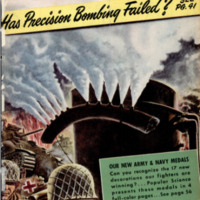 Popular Science Monthly, v. 143, n. 1, 1943
Popular Science Monthly, v. 143, n. 1, 1943

